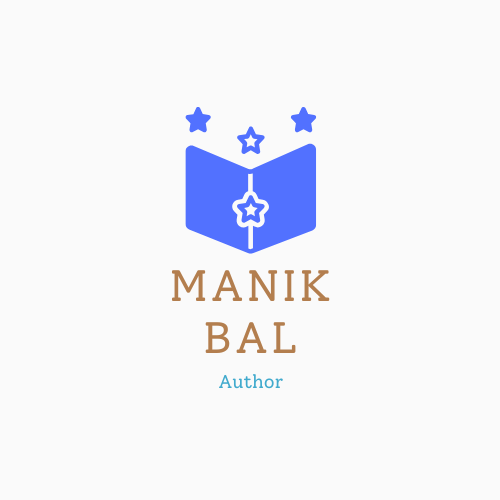Unlocking Emotional Healing Through Writing Practice
Writing has long been recognized as a powerful tool for emotional healing and personal growth. The act of putting pen to paper or fingers to keyboard allows individuals to explore their innermost thoughts and feelings, providing a safe space for self-expression and reflection. Through writing, people can gain clarity on their emotions, experiences, and relationships, often uncovering insights that may have remained hidden in the recesses of their minds.
The process of writing can be cathartic, offering a release valve for pent-up emotions and unresolved issues. As words flow onto the page, individuals may find themselves unburdening their hearts and minds, experiencing a sense of relief and lightness. This emotional release can be particularly beneficial for those grappling with trauma, grief, or other challenging life experiences, as it provides a means of processing and making sense of complex emotions.
The Science Behind Writing and Emotional Healing
Research has shown that writing about emotional experiences can have significant positive effects on both physical and mental health. Studies have demonstrated that expressive writing can lead to improvements in immune function, reduced stress levels, and decreased symptoms of depression and anxiety. The act of writing appears to help individuals organize their thoughts and emotions, making them more manageable and less overwhelming.
Neuroimaging studies have provided further evidence of the brain’s response to writing about emotional experiences. These studies have shown increased activity in areas of the brain associated with emotional regulation and self-awareness during and after writing exercises. This suggests that the process of writing may help rewire neural pathways, potentially leading to long-term improvements in emotional well-being and resilience.
Techniques for Using Writing to Process and Heal Emotions
One effective technique for using writing to process emotions is free writing, where individuals write continuously for a set period without stopping to edit or censor themselves. This stream-of-consciousness approach can help bypass mental barriers and allow for the expression of deep-seated emotions and thoughts. Another powerful technique is letter writing, where individuals compose letters to people or situations that have impacted them emotionally, whether or not these letters are ever sent.
Journaling is another popular and effective method for emotional healing through writing. Regular journaling can help individuals track their emotional patterns, identify triggers, and develop greater self-awareness. Guided journaling prompts can be particularly helpful for those who are new to the practice or struggling to get started.
These prompts can range from simple questions about daily experiences to more in-depth explorations of past events and future aspirations.
Exploring the Connection Between Writing and Mental Health
The relationship between writing and mental health is multifaceted and profound. Writing can serve as a form of self-therapy, allowing individuals to work through their thoughts and emotions in a structured and intentional way.
This process can lead to increased self-understanding and emotional regulation, which are key components of good mental health.
Additionally, the act of writing can provide a sense of control and agency, particularly valuable for those struggling with anxiety or feelings of helplessness. Writing can also be a powerful tool for reframing negative experiences and cultivating gratitude. By consciously focusing on positive aspects of life or finding silver linings in challenging situations, individuals can shift their perspective and improve their overall mental well-being.
Moreover, the sense of accomplishment that comes from maintaining a regular writing practice can boost self-esteem and provide a sense of purpose, both of which are crucial for mental health.
How to Start a Writing Practice for Emotional Healing
Beginning a writing practice for emotional healing can be as simple as setting aside a few minutes each day to write freely about one’s thoughts and feelings. It’s important to create a comfortable and private space for writing, free from distractions and judgment. Some individuals find it helpful to establish a routine, such as writing first thing in the morning or before bed, to make the practice a consistent part of their daily lives.
For those who are unsure where to begin, starting with guided prompts or structured exercises can be beneficial. These might include writing about a specific emotion, describing a challenging experience, or exploring hopes and dreams for the future. It’s crucial to approach the practice with an open mind and without expectations, allowing thoughts and emotions to flow naturally onto the page without self-censorship or criticism.
Overcoming Barriers to Writing for Emotional Healing
Facing Fears and Emotions
One common obstacle to writing for emotional healing is the fear of confronting painful memories or difficult emotions. It’s essential to remember that the writing process is meant to be a healing experience, not a retraumatizing one. To overcome this fear, individuals can start by writing about small, manageable topics and gradually move on to more challenging subjects as they feel ready.
Letting Go of Perfectionism
Another significant barrier to writing for emotional healing is perfectionism or self-criticism. It’s crucial to understand that the goal of writing for emotional healing is not to produce polished writing, but rather to engage in honest self-expression. By letting go of the need for perfection, individuals can focus on the therapeutic benefits of writing.
Practical Solutions for a Sustainable Practice
Time constraints and lack of privacy can also hinder a consistent writing practice. To overcome these challenges, individuals can consider carrying a small notebook to jot down thoughts throughout the day or using a password-protected digital journal for added privacy. Reframing writing as a form of self-care and prioritizing it alongside other essential daily activities can also be helpful in maintaining a sustainable writing practice.
Tips for Sustaining a Writing Practice for Long-Term Emotional Healing
Sustaining a writing practice over the long term requires commitment and patience. It can be helpful to set realistic goals, such as writing for a certain amount of time each day or week, rather than focusing on producing a specific quantity of writing. Celebrating small victories and acknowledging progress, no matter how incremental, can help maintain motivation and enthusiasm for the practice.
Experimenting with different forms of writing can also help keep the practice fresh and engaging. This might include trying poetry, fiction writing, or even creating dialogue between different aspects of oneself. Joining a writing group or sharing writing with a trusted friend or therapist can provide accountability and support, as well as new perspectives on one’s writing and emotional journey.
Ultimately, the key to sustaining a writing practice for emotional healing is to approach it with curiosity, compassion, and a willingness to explore the depths of one’s inner world.
FAQs
What is emotional healing through writing practice?
Emotional healing through writing practice is the process of using writing as a tool to explore, process, and heal from emotional pain, trauma, and stress. It involves using various writing techniques to express and understand emotions, leading to a sense of relief and healing.
What is the power of writing for emotional healing?
The power of writing for emotional healing lies in its ability to help individuals gain insight into their emotions, release pent-up feelings, and reframe their experiences. Writing allows individuals to externalize their emotions, which can lead to a greater sense of control and understanding over their feelings.
What is the science behind writing and emotional healing?
The science behind writing and emotional healing is rooted in the therapeutic benefits of expressive writing. Research has shown that writing about emotional experiences can lead to improved mood, reduced stress, and enhanced overall well-being. This process can also have physiological effects, such as lowering blood pressure and improving immune function.
What are techniques for using writing to process and heal emotions?
Techniques for using writing to process and heal emotions include free writing, journaling, letter writing, and narrative therapy. These techniques encourage individuals to explore their emotions, confront difficult experiences, and reframe their perspectives through writing.
What is the connection between writing and mental health?
The connection between writing and mental health is significant, as writing can serve as a therapeutic tool for managing and improving mental well-being. Engaging in regular writing practice can help individuals regulate their emotions, reduce symptoms of anxiety and depression, and enhance their overall mental health.
How can one start a writing practice for emotional healing?
To start a writing practice for emotional healing, individuals can begin by setting aside dedicated time for writing, choosing a comfortable and private space, and experimenting with different writing techniques. It’s important to approach the practice with self-compassion and an open mind.
What are some common barriers to writing for emotional healing?
Common barriers to writing for emotional healing may include self-criticism, fear of confronting difficult emotions, lack of time, and uncertainty about how to start. Overcoming these barriers often involves practicing self-compassion, seeking support from others, and gradually building a writing routine.
What are some tips for sustaining a writing practice for long-term emotional healing?
Tips for sustaining a writing practice for long-term emotional healing include setting realistic goals, establishing a consistent writing routine, seeking inspiration from various sources, and being open to adapting the practice as needed. It’s also important to celebrate progress and acknowledge the benefits of the writing practice.






0 Comments